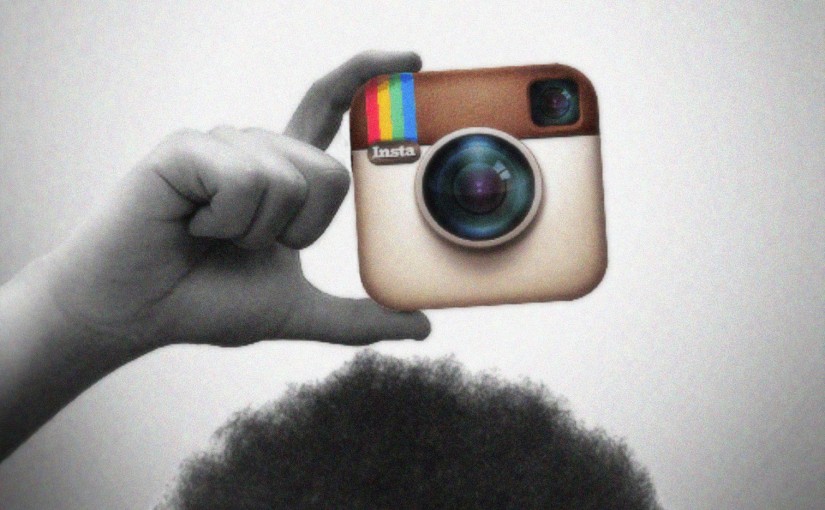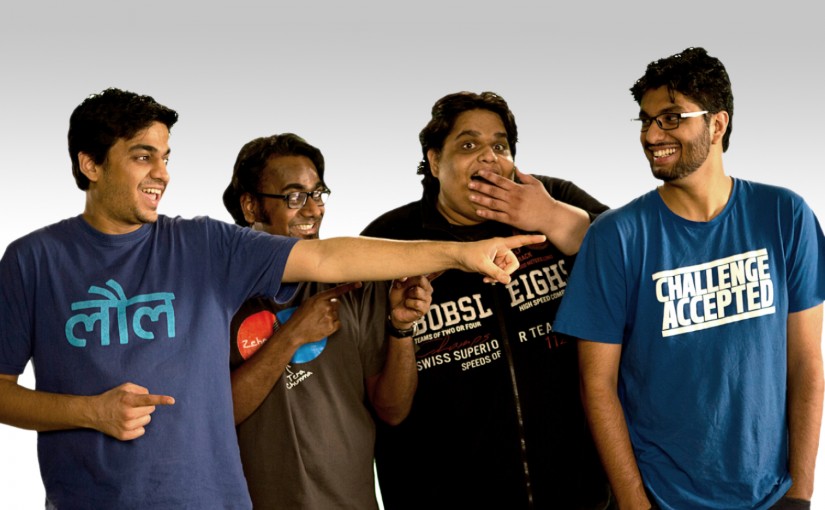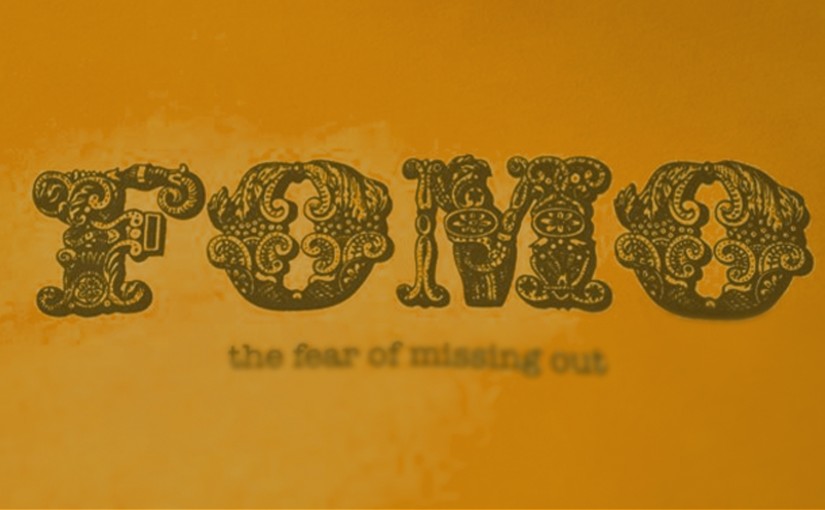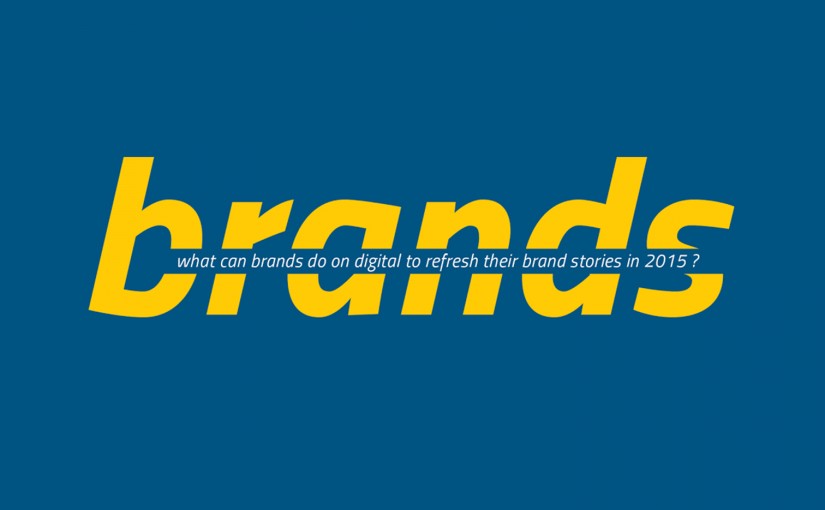Drop us a few lines about the task and we will get back immediately to see we how we can take the discussion forward. Alternately, just pick up the phone and speak with us at +91 9910034330 and we would be happy to help.
- - Do tell us a little about the nature of your business.
- - Be specific about what you’d like us to help you with.
- - Knowing your budget always helps us plan a suitable intervention.
- Blog
Businessworld cover story on “how not to do it” in Social Media
-
Businessworld cover story on “how not to do it” in Social Media
The latest issue of Businessworld has done a cover story on social media in which I was quoted some places. Here is the full story:
“Business was sailing on as usual when along came a beast called social media. With a life of its own, it took the globe by storm. In the US, Facebook replaced the unassailable Google as the most visited site. Social media even overtook porn as the No.1 activity on the Internet. In about five years, the online world was swimming with networks of people talking, complaining, recommending, sharing, learning. And guess who was not in charge? Big business.
Soon everything online was coloured social. Ordinary netizens swam to the deep end, but businesses were left gasping and clutching the railings. Suddenly what customers said online outpaced publicity or ad campaigns. Opinion came with photos, videos and voice, and could spread like wild-fire. This was a fad that would not go away. Businesses realised there was no beating the social media; they will have to join it.
Easier said than done. It took radio 38 years to reach an audience of 50 million; television, 13 years; Internet, four years; and the iPod, just three years. If businesses were caught unawares, it is understandable because the social media sites themselves are not quite sure of what they are about. Marketing consultant and CEO of Paul Writer, Jessie Paul, says: “It is early days, but like most other platforms before, social networking is seen as the marketers’ next big leap. Everybody wants to be there but nobody has the winning formula. They wait for the magical thing to open up.”
But there will be no magic. Marketers will have to reorient and reinvent for social media, which doesn’t look like it’s going away anytime soon. So, back in the boardroom, one can tell the men from the boys as they meet this new challenge where every move is nakedly visible to customers. There is no sure-fire winning formula yet for social media but there are several things that organisations definitely should not do.
Deadly Sin No. 1: Just Be There
Starting up accounts and pages on social media sites and leaving them to fend for themselves is the first good way to mess it up. In fact, there’s little to choose between zero presence and mere presence. It’s a clear case of been there, but not done that.
Nirula’s has a Facebook page. While that may be exceedingly cool, don’t imagine that the page is as busy as the old capital-based favourite fast-food joints you’ve always known and loved. The page has the familiar Nirula’s logo, a dump of the Wikipedia entry, and 70-odd fans who have nothing to do after having pressed the ‘like’ button. Much the same goes for the popular Kurkure or Nimbooz. Their ads may be on YouTube because it costs nothing to put them there, but this does not amount to reorienting for social media.
Punita Lal, marketing head of beverages at PepsiCo India admits that the company is still trying to scale up its efforts on social media. “Twitter as a social medium is something we have limited knowledge of. We don’t know how best to use it other than a buzz medium,” she says. Pepsi, the beverage brand itself, is quite active on social media, but sub-brands such as Tropicana, Nimbooz and Mountain Dew are not. “By next year, we shall be more aggressive with our presence,” says Lal.
Hareesh Tibrewala, joint CEO of social media solutions company SocialWavelength, says brand managers are just beginning to wake up and smell the coffee and are figuring out that social media makes for a good place to communicate. Brand managers themselves agree. “In India most of the brands have not reached the desired level. We are still finding a way to get there,” accepts Mohit Beotra, head of brand and media at Airtel. The brand’s Facebook community is liked by a mere 2,262 people — hardly a representative of the number of subscribers it has.
Now, ever so cautiously, companies are getting ready to dip their toes in the water. “A year ago, we needed to sell the concept of social media,” Tibrewala says. “Today, when we meet a brand manager, he seems to be aware and is keen to allocate some nominal budget and try out the medium.” But things move at the speed of thought on social media and brand managers need to come up with quicker game plans. Easy choices: be swamped, survive, or swim very fast.
Not that being swamped is a real choice. Being non-existent on social media says something about a company today. If companies don’t create their own space and presence, someone else will — and not necessarily the way the company would like. “Many brand managers have the ostrich syndrome. They bury their heads and pretend that consumers are not talking,” say Prasanth Mohanachandran and Karl Gomes, co-founders of digital marketing firm AgencyDigi.
On the father of all social networking sites, Facebook, it is often fans, not brand managers, who put up pages for companies. But loyalty can only go so far before these pages begin to look neglected. Fans may use their personal networks to populate the page once, but what after that?
To add to the brand managers’ worries is the ever present possibility of something going wrong and fans putting up hate or cause pages. The Boycott BP page on Facebook has nearly one million followers busy taking potshots at the company for the oil spill off the Gulf of Mexico. Meanwhile, on Twitter, BP Global PR, which has no official connection with the company, has 182,000 followers who are having a field day getting at BP on the impact of the spill on the environment.
Deadly Sin No. 2: Go Social, Minus Plan
Leaving social media to the company geek can be a waste of time at best and a disaster at worst. Coming at it from a different place, the tech savvy fast tracker will magically know how to do it, but not why. With a nebulous awareness of the company’s strategy, business goals, communication philosophy and other heavyweights, typically such a person will not be able to wear the brand manager’s hat and, sooner or later, will end up saying something that doesn’t fit the brand’s image.
In the world of social media, everybody stands an equal chance of being caught with his pants down. And, we are not referring to the Mayor of Leicester here. Personal care brand Dove’s ‘real beauty’ campaign, featuring actual consumers was under scathing attack on blogs in 2008 after someone on the production team of the commercials was quoted in an interview saying he had touched up the images of people in the ads. Consumers angrily criticised Dove for not being truthful after promising to showcase ‘real’ beauty.
In time, the dust settled after Unilever denied that the images were digitally altered. But it’s difficult to wipe away footprints. Dove recently advertised on Craigslist seeking women with ‘flawless skin’ and ‘no scars’ for its next ‘real beauty’ campaign. Consumers instantly pointed out that flawless could hardly be ‘real’ and that Dove seemed to be back to its old tricks.
Dove’s is not an isolated incident. Another famous case doing the rounds on the Net is of 3M, makers of Post-its, which discovered that someone had done a creative job of dressing up a Jaguar car in Post-its and taken a photograph. The company got in touch with the creator and said it would like to use the photograph in an ad, but when he asked for money, 3M decided to create its own Post-It art. This set the blogs on fire and it wasn’t long before 3M found itself in an embarrassing spot.
The danger of going social just to be there multiplies many times when accompanied by the lack of a strategy. Rajesh Lalwani, founder of social media consulting firm Blogworks, points out that there is a bit of science to social media. “Social media must be looked at from a strategic perspective. It’s not a toy; it’s not a game you are playing. Just because everybody is doing something, it’s not a good enough reason for your company to get there too.”
More confusion ensues when a social media strategy doesn’t remotely fit the existing strategy of a company. Says Tibrewala: “Companies are often unable to think of social media as part of an integrated brand communication. Social media platforms need to be connected to the other brand communication initiatives.”
Cadbury does a good job of integrating the message and uses its product packs to point to its online activities, says Tibrewala.
But when the challenge gets too much, brand managers in many companies cut and paste campaigns and activities offline on to a social media platform, whether it is appropriate or not. They even choose their social media platform more by default than by design.
Deadly Sin No. 3: Broadcast Yourself
Youtube’s tagline was probably not meant for brand managers as much as it was for ordinary netizens. Yet, a large number of companies mess it up by pushing out one-sided communication in the name of social media marketing.
Pushkar Sane, global head of social marketing practice at Starcom Mediavest Group, a global media services agency, says brand managers couldn’t do worse than broadcasting on social media: “Marketers love their own voice. It’s all about I, me, myself, the brand; never about consumers. They talk to consumers rather than converse with them, when social media is all about having two-way conversations. How many times did a brand become your friend on Facebook?”
You have only to search for some of the top brands on Twitter to see one-way communication at work. Churning out 140-character information nuggets about products or companies takes neither the time nor the effort that is required to engage customers in conversations or to even listen. Lalwani says it’s important for companies to listen: “The reason social media is so important is because it is a platform where people talk about their lives so freely. Their experiences with products and services are also a part of their lives and they talk about that too.”
Predictably, companies claim they have no time or resources. But things can be done with little resources too. Starbucks uses a relatively small social media team of six and has one of the highest engagement scores among 100 top brands. Toyota, relatively new to the social media arena, launched its YouTube channel in March 2008 and a Twitter profile in April 2008. Yet, with a team of just three people, Toyota was able to achieve an impressive engagement score across multiple channels.
There are rich insights for businesses that care to listen to their customers on social media. Research that would cost a lot and yield very little qualitative information has some competition from the real-life learning that comes directly from customers. Rajesh Lalwani explains how directly useful social media is for the customer and the company. “Facebook and Twitter, for example, are great connection platforms. However, when a customer wants to make a purchase decision, blogs and forums.
often provide the answer. And it is easy enough for brand managers to scour relevant blogs and forums and see what customers are saying about them,” says Lalwani.
Deadly Sin No. 4: Being Too Autocratic
Not so long ago, Nestle apparently posted a request to users asking them not to use variations of its logo as their profile picture. Posts would be deleted, someone from Nestle warned. Users were outraged and asked Nestle not to tell them what to do. The Nestle Facebook managers made things worse by getting outraged themselves and saying it was their page and they set the rules and if users didn’t like it, they could go.
Soon, what started off as a tussle between the food giant and Greenpeace became a free-for-all with consumers jumping into the mix. Greenpeace had created a mock ad of Nestle’s flagship brand, Kit-Kat, alleging that the company’s brands were destroying forests and endangering lives of Orangutans. In reply to this, Nestle asked that its logo not be tampered with, which started the fight.
Nestle recently made a statement saying that it has stopped procuring from suppliers who do not practise sustainable farming. The incident, however, is still a lesson in social media PR and customer communication.
Any company could face negative comments from customers. It is impossible to please everyone all of the time. But handling negativity or criticism by going on the offensive causes more harm than good. Brand managers have quickly learnt that such comments have to be handled with kid gloves. In fact, customers have to often be thanked for giving feedback, not rapped on the knuckles. One of the mandates of the social media consultant or manager within the company, says Lalwani, is to deftly bring the quantum of negative comments down.
It is not only important to respond, but to respond intelligently and quickly. Kiruba Shankar, CEO of Business Blogging, a company that helps businesses manage their online reputation, says social media is much like running a marathon — it needs to be effectively fast paced.
The speed with which word of mouth can travel on social media has led to the term being rephrased as ‘world of mouth’. A delay in responding to grievances, an apparent sluggishness in addressing a problem, failure to come up with a solution in a transparent manner can all negatively impact a brand today in ways that were never possible before.
Deadly Sin No. 5: Sell, Sell, Sell
Although the ultimate aim of marketers and brand managers is to get more business, they could mess it up by forgetting that people on social media are not merely there to be the recipient of sales. Retail major Shoppers Stop’s page on Facebook looks no different from an e-shopping catalogue.
Tibrewala says that seeing social media as just another marketing tool is a fallacy. “One has to think of it as a communications tool and the brand has to intelligently build its brand communication and weave it into the social fabric of its target market. Instead, brand managers think of it as a campaign.”
We can blame much of the get-rich literature that floods the Internet for colouring everything in shades of marketing. In truth, marketing is just one aspect of the many things that happen on social media — very much like real life. User tolerance for marketing messages has a limit.
One person who handles communication, response, criticism and engagement rather well is the Mahindra Group managing director, Anand Mahindra. With 76,000-plus followers on his Twitter page, he is comfortable and natural while dealing with comments from customers and others. Always responsive and never dismissive, rather than hard selling, he sets just the right tone.
Deadly Sin No. 6: Do One Thing, Say Another
This age of Web 2.0 has brought in a completely new level of transparency. Most consultants agree that social media is going to force companies to be more honest in their campaigns and claims simply because it is so easy for consumers and others to refute their claims.
Well, let us hope so. An unfortunate situation with IT giant HCL, highly acclaimed by the world of management for its unique concept ‘Employee First, Customer Second’, shows how things can go terribly wrong.
Online, employees have ripped apart the tagline and the concept it stands for. A group on Facebook for ‘Employee First Customer Second’ has members trashing the concept. HCL seems to have chosen to remain masterfully silent. “This is a typical example of companies who seem to be happy to respond to the positive but choose to remain silent when there are negative comments,” says Krishna Prasad, chief experience officer at Dentsu Digital.
HCL executives, however, say that such stray incidents do not take away the impact that social media can have. Saurav Adhikari, president and global head of corporate strategy for HCL says that social media has helped in popularising their brand image. “The average age of an HCL employee is 29 years,” says Adhikari. “There was no way of connecting with the young HCL-ite and young IT professionals but through social media. So, yes, social media is very integral for HCL as an organisation that must be connected to the pulse of its increasingly young consumer and employee.”
These and many other incidents have shown that there is little point in being anything but truthful when anyone, particularly a disgruntled employee, can tell it like it is on social media sites.
Deadly Sin No. 7: Forget The Community
Another way to mess it up is to fail to build or target a community. Gaurav Mishra, CEO of social media consultancy 2020 Social, says, “Companies go wrong when they don’t start with the community. They go wrong when they start with a television commercial and say ‘how do we do social media now?’ If the punch line of a television ad does not connect with the consumer’s lifestyle, passion and interest, it is bound to fail.”
Mishra says that the smarter brand managers start with a community and build around it. “The campaign for Sunsilk Gang of Girls, or the Pepsi Youngistan campaign or Tata Tea’s Jaago Re are all ads that start with a community of young people.”
This year, Pepsi has said it will not do any regular Superbowl television ads (in the US) but will invest in an online project called Refresh, which will be about refreshing the society by providing millions of dollars to fund good ideas, big and small, Mishra adds.
Experts say the danger lies in companies chasing huge numbers but not doing anything to sustain the interest. “There seems to be no longer-term vision,” says Tibrewala.
Mishra points out, however, that Apple is an interesting example of a company not active on social media. “It does not do social media, it does not have a Twitter account, or even a blog. But it does business. It says that the people the company is trying to connect with want creative and high-end designs, and Apple does that with astounding success. The result is the fans are doing the social media marketing for the brand,” says Mishra. Apple, of course, may be an exception and who is to tell what would happen if they were, in fact, active on social media. But perhaps that would be more success than even Apple can handle.
At the end of the day, the one who can tell us all a thing or two about social media is probably Lady Gaga.
With reports from Prasad Sangameshwaran, Sunny Sen, Suneera Tandon and Malabika Sarkar bweditor at abp dot in
(This story was published in Businessworld Issue Dated 19-07-2010)Experts & Their Favourites
Social media has been out there long enough but most marketers continue to grapple with the Facebooks and the Twitters. Most oscillate between a push for a high quotient of fans on their pages to resolving customer problems through blogs. One wrong step and it can be a nightmare — in a matter of clicks. But a handful of brands are getting it right. These have acknow-ledged the attention and focus needed to effectively use the social media platform. And their cognisance of the medium is helping them engage, communicate and mingle with the right audience.
We asked four social media consultants to pick the one brand they think has got it right on any social media site. Their verdict is out. And, as you will notice, despite the hype and the confusion, social media marketing can work for others as it did for these brands.
Kiruba Shankar, CEO, Business Blogging
My Pick: Ching’s Secret
USP: Present across all media, has dedicated channels and team
I like Ching’s Secret because its top management is also involved in social media. They personally answer queries and respond to comments. No wonder the Chinese food condiment maker is one of the biggest Indian brands on Facebook. It is also one of the few brands to have a dedicated YouTube channel, with recipes engaging viewers. Customer needs are tackled effectively to the extent of delivering the product to a customer in whose locality it is not available. In May, for example, its Facebook page got almost 80 million views. The company says 35 per cent of its ad spend is dedicated to digital advertising, and most of this is on social media — Twitter (423 followers as of 8 July), Facebook (121,809) and YouTube (379,611 total upload views).
Rajesh Lalwani, founder, Blogworks
My Pick: Nokia
USP: Engages multiple stakeholders for its product
Nokia has a robust insights programme. It reaches out to thought leaders for broad insights into a market; seeks ongoing feedback from technology evangelists; and, works closely with influencers such as bloggers to co-create products and communication. Prospective customers can see earlier feedback from different sources. Nokia has various blogs, and is on Facebook, Twitter and Hi5. Similarly, it has forums where customers can find answers. In 2009, for the N97 series Nokia conducted select blogger meet-ups to demonstrate latest applications on Ovi Store, N97 mini, widgets, etc. The Nokia N97 mini triggered over 900-plus tweets in 3-4 days on applications on N97 mini, design philosophy and other key attributes.
Raj Menon, COO, Contests2Win.com
My Pick: Tata DoCoMo
USP: Adapting the brand to the relevant target group
Telecom companies are focusing on data usage and Tata DoCoMo has realised that the social media is the ideal medium to reach out to the consumers. Old world marketers are used to the monologue marketing format — where they spray their marketing messages across different media and pray that consumers will respond. Tata DoCoMo posts are relevant to the target audience, be it during the Indian Premier League or the FIFA World Cup, and is interactive and they always elicit a response from fans. On an average, their posts get about 200 likes and over 100 comments. They had over 160,052 fans on Facebook and over 8,241 followers on Twitter (8 July). They use the latter really well to resolve consumer problems.
Rahul Nanda, COO, Webchutney
My Pick: Tata Tea Jaago Re
USP: Marrying social activism with social media
The blog on the Jaago Re website gives it a human interface and a two-way channel. Prominent bloggers and experts on social change are featured users and have written guest articles or posts. Its Facebook representation has helped create a brand identity and established its presence on a platform that is heavily used by Jaago Re’s core audience. It helps connect, create a community and foster relationships to promote Jaago Re’s social ideology. The brand’s Twitter account (1,020 followers) acts as a platform to pose relevant questions, initiate conversations and respond to other tweeple. The campaign was launched on 15 March and proudly boasts over 15,000 people awakened.
Disclaimer: Views of authors are personal and do not represent the views of Blogworks, or any of its clients.
-
Contact
conversations@blogworks.in
+91-9910034330 -
Newsletter
-
Social

























